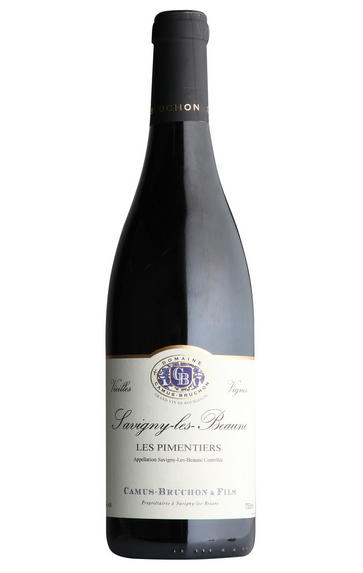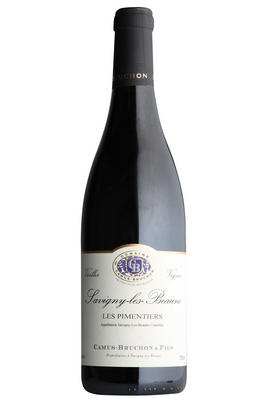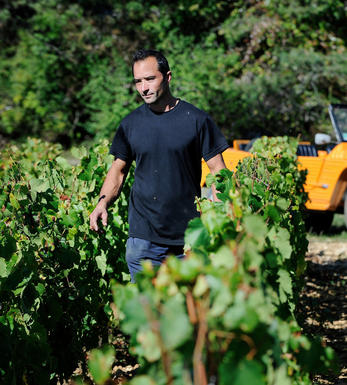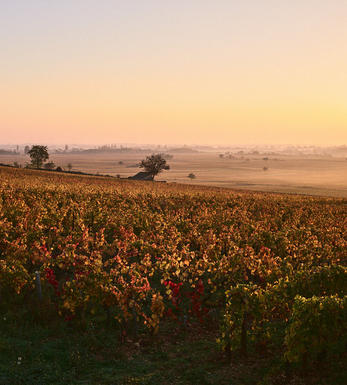
2020 Savigny-lès-Beaune, Les Pimentiers, Vieilles Vignes, Domaine Camus-Bruchon & Fils, Burgundy

Critics reviews
Matured with 10% new oak, the 2020 Savigny-lès-Beaune Les Pimentiers, from vines planted in 1929, has a well-defined and quite expressive bouquet with subtle rose petal and sous-bois scents percolating through the red fruit. The palate is well-balanced, and the 25% new oak is neatly enmeshed with quite a sappy finish. Not long in the mouth, nevertheless, this constitutes a very decent Savigny-lès-Beaune.
This was my second visit to taste with winemaker Guillaume Camus at his winery in Savigny-lès-Beaune. “The harvest was from August 25 until September 2, over six or seven days. I am bringing in more 500-litre barrels to impart more elegance to the wines. All the Savigny cuvées contain 30% whole bunch. The highest alcohol is the Aux Grand Liards at 14.1° this year, with just a little acidification, the most for the Beaune Clos du Roi. Everything is bottled under natural cork except the white. For years we have been striving to reduce yields, but now, at least in 2020 and 2021, we want higher yields to reduce concentration and gain more freshness." This producer is still a bit under the radar as far as I am concerned. Camus's 2020s demonstrated fine fresh fruit and impressive terroir expression.
Drink 2024 - 2036
Neal Martin, Vinous.com (December 2021)
About this WINE

Domaine Camus-Bruchon
Domaine Camus-Bruchon is a small, family-owned winery located in Savigny-lès-Beaune, in the Côte de Beaune region of Burgundy. The estate was founded in 1910 by Charles Camus and has been passed down through the generations. Today, it is run by the fourth generation of the Camus family, brothers Laurent and Dominique Camus.
The estate consists of approximately 15 hectares (37 acres) of vineyards, primarily in the Savigny-lès-Beaune appellation but also in the neighbouring appellations of Pernand Vergelesses and Aloxe Corton.
The estate produces a range of wines from Pinot Noir and Chardonnay, including red and white Savigny-lès-Beaune, and Premier Cru and Grand Cru wines from the neighbouring appellations. Traditional winemaking techniques are favoured, including hand-harvesting, natural fermentation, and ageing in French oak barrels.

Savigny-lès-Beaune
Savigny-lès-Beaune is situated within France’s larger Burgundy wine region, celebrated for its intricate terroir-driven winemaking traditions. The village lies just north of the town of Beaune and is known for producing red and white wines, although red wines dominate in quantity.
The reds are primarily made from Pinot Noir grapes, which thrive in the region’s limestone and clay-rich soils. These wines often balance ripe fruit flavours like red cherries and raspberries, earthy forest floor notes, and a refined structure of moderate tannins and vibrant acidity.
The whites from Chardonnay grapes display a refreshing acidity and diverse flavours, from zesty citrus and green apple to more complex hints of hazelnuts, white flowers, and mineral nuances.
Due to its hilly landscape, Savigny-lès-Beaune benefits from a mosaic of microclimates and various soil types, allowing for subtle variations in the wines produced across its multiple vineyards or “climats.” These climatic and soil distinctions contribute to the unique character of each wine, emphasizing the concept of terroir – the idea that a wine’s flavour and personality are intricately tied to its specific place of origin.
The winemakers in Savigny-lès-Beaune are deeply committed to traditional winemaking methods, paying meticulous attention to detail during vineyard management and the winemaking process. Hand-harvesting, careful sorting of grapes, and gentle extraction methods are standard practices, ensuring that the wines reflect the essence of the terroir while maintaining a sense of finesse and elegance.

Pinot Noir
Pinot Noir is probably the most frustrating, and at times infuriating, wine grape in the world. However when it is successful, it can produce some of the most sublime wines known to man. This thin-skinned grape which grows in small, tight bunches performs well on well-drained, deepish limestone based subsoils as are found on Burgundy's Côte d'Or.
Pinot Noir is more susceptible than other varieties to over cropping - concentration and varietal character disappear rapidly if yields are excessive and yields as little as 25hl/ha are the norm for some climats of the Côte d`Or.
Because of the thinness of the skins, Pinot Noir wines are lighter in colour, body and tannins. However the best wines have grip, complexity and an intensity of fruit seldom found in wine from other grapes. Young Pinot Noir can smell almost sweet, redolent with freshly crushed raspberries, cherries and redcurrants. When mature, the best wines develop a sensuous, silky mouth feel with the fruit flavours deepening and gamey "sous-bois" nuances emerging.
The best examples are still found in Burgundy, although Pinot Noir`s key role in Champagne should not be forgotten. It is grown throughout the world with notable success in the Carneros and Russian River Valley districts of California, and the Martinborough and Central Otago regions of New Zealand.


Buying options
Add to wishlist
Description
20% new oak and 30% whole-bunch.
The vines for this wine were planted in 1929 by Guillaume Camus’s great-great-grandmother. These low-yielding old massal selections impart a silken texture and remarkable intensity for a humble village Savigny-lès-Beaune. There is a delicious core of red-berry fruit and a crisp, juicy finish with notes of pepper.
Drink 2024 - 2030
Adam Bruntlett, Senior Buyer, Berry Bros. & Rudd
wine at a glance
Delivery and quality guarantee